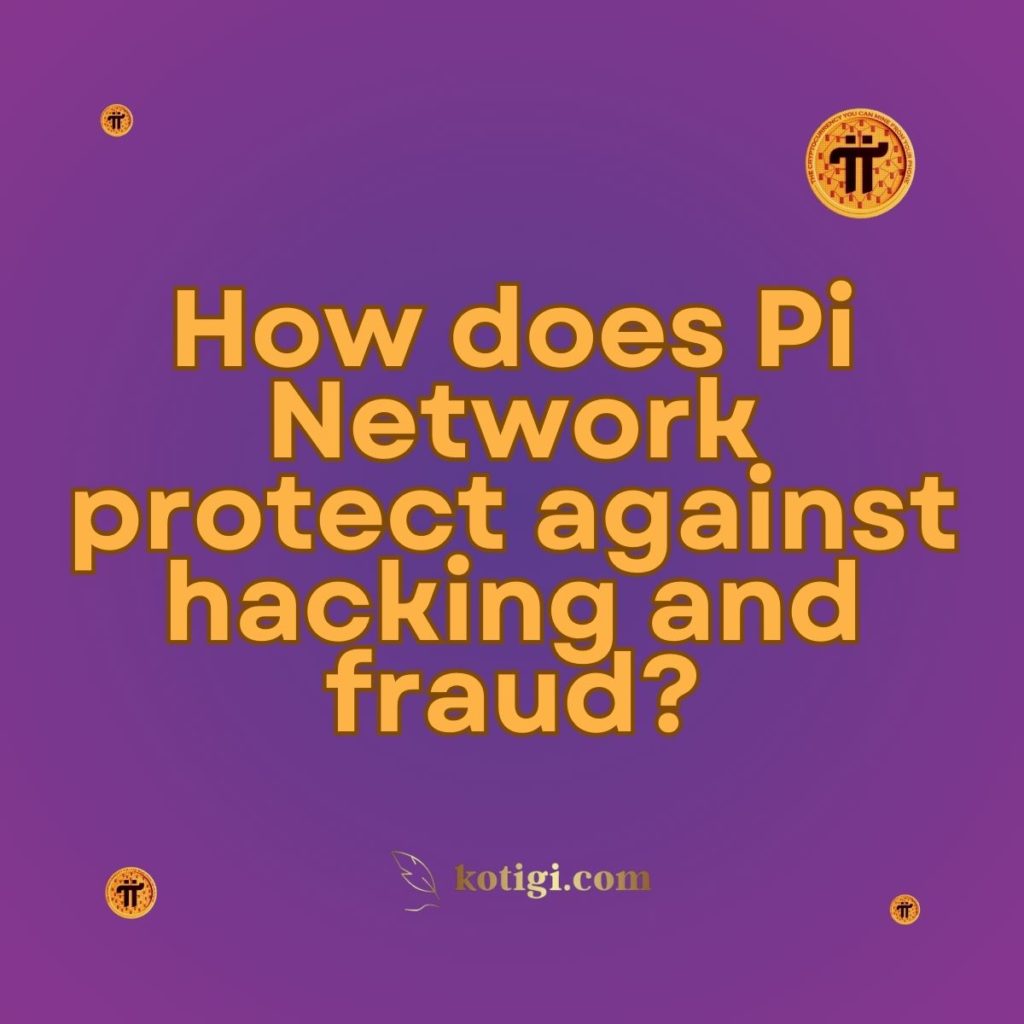
How does Pi Network protect against hacking and fraud?
Pi Network employs several security measures to safeguard its platform and users from hacking and fraud. As a growing cryptocurrency project, ensuring the security of user assets and personal information is paramount. Here’s a detailed look at the strategies Pi Network uses to protect against hacking and fraud:
1. Secure Development Practices
1.1. Code Audits:
Pi Network conducts regular security audits of its codebase to identify and address vulnerabilities. These audits help ensure that the platform’s software is robust and less susceptible to exploitation by hackers.
1.2. Secure Coding Standards:
The development team follows secure coding practices to minimize the risk of vulnerabilities. This includes input validation, proper error handling, and adherence to security best practices during software development.
2. Data Encryption
2.1. Encryption Protocols:
Pi Network uses advanced encryption protocols to protect data transmitted between users and the platform. This includes encrypting sensitive information such as user credentials and transaction data to prevent unauthorized access.
2.2. Encrypted Storage:
User data and sensitive information are stored in encrypted form to enhance security. Encryption ensures that even if data is accessed without authorization, it remains unreadable and protected.
3. Multi-Factor Authentication (MFA)
3.1. Enhanced Login Security:
Pi Network supports multi-factor authentication (MFA) to add an extra layer of security to user accounts. MFA requires users to provide additional verification, such as a code sent to their phone, in addition to their password.
3.2. Account Protection:
By implementing MFA, Pi Network reduces the risk of unauthorized access to user accounts, making it more difficult for hackers to gain control even if they obtain login credentials.
4. Know Your Customer (KYC) Verification
4.1. Identity Verification:
KYC procedures require users to verify their identity using government-issued identification and other personal information. This helps to prevent fraudulent activities by ensuring that each account is associated with a real, verified individual.
4.2. Fraud Prevention:
The KYC process helps to deter and identify fraudulent accounts and activities, such as creating multiple accounts for malicious purposes or engaging in fraudulent transactions.
5. Fraud Detection Systems
5.1. Monitoring and Alerts:
Pi Network employs monitoring systems to detect unusual or suspicious activities. These systems generate alerts for potential fraud or hacking attempts, allowing the team to take timely action to address potential threats.
5.2. Automated Security Measures:
Automated systems analyze transaction patterns and user behavior to identify potential fraud. These systems can trigger additional verification or restrictions if suspicious activity is detected.
6. User Education and Awareness
6.1. Security Best Practices:
Pi Network provides educational resources to help users understand best practices for securing their accounts. This includes advice on creating strong passwords, recognizing phishing attempts, and safeguarding recovery phrases.
6.2. Awareness Campaigns:
The network may conduct awareness campaigns to inform users about common scams and how to avoid them. Educated users are better equipped to protect themselves from fraud and security threats.
7. Regular Security Updates
7.1. Software Patches:
Pi Network regularly updates its software to address security vulnerabilities and improve overall platform security. These updates include patches for known issues and enhancements to protect against emerging threats.
7.2. Community Feedback:
The network actively seeks feedback from its community to identify potential security concerns and areas for improvement. This collaborative approach helps to strengthen the platform’s defenses.
8. Backup and Recovery Procedures
8.1. Data Backup:
Regular backups of critical data are performed to ensure that it can be restored in the event of an incident. This helps to prevent data loss and ensure continuity of service.
8.2. Recovery Protocols:
Clear protocols are in place for recovering from security incidents or breaches. These protocols include steps for containment, investigation, and remediation to minimize the impact on users and the platform.
Conclusion
Pi Network employs a comprehensive range of security measures to protect against hacking and fraud. These include secure development practices, data encryption, multi-factor authentication, KYC verification, fraud detection systems, user education, regular security updates, and robust backup and recovery procedures. By implementing these strategies, Pi Network aims to safeguard user assets and ensure a secure and trustworthy environment for its community.




